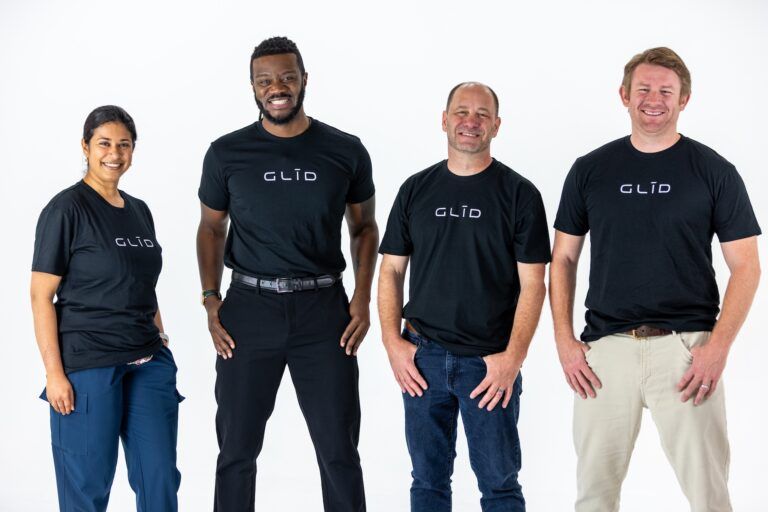Glīd Unveils World’s First Unmanned Road-to-Rail Platform to Automate First Mile Logistics and Closes Oversubscribed $3.1M Pre-Seed Round

It’s a double milestone month for California-based startup Glīd, which is closing its oversubscribed $3.1 million pre-seed funding round led by Outlander VC, with participation from Draper U Ventures, Antler, The Veteran Fund, M1C, and mission-aligned angel investors focused on national resilience, industrial reinvention, and climate infrastructure. The company also unveiled a hybrid-electric Rāden vehicle paired with an AI-powered EZRA-1SIX system to automate the first mile and reclaim idle infrastructure.
Most logistics problems aren’t about technology — they’re about everything breaking down between systems. That’s the gap Glīd is closing. The California-based startup just launched what it calls the world’s first unmanned, autonomous road-to-rail platform, combining a hybrid-electric vehicle named Rāden with an AI-powered orchestration system known as EZRA-1SIX. The goal? Replace outdated transload zones, reclaim idle infrastructure, and shrink first-mile costs by up to 40 percent.
The company made its debut at New Mobility Futures, where it introduced the dual-mode platform built to support freight, defense, and industrial automation. With supply chains under pressure from labor shortages, geopolitical tension, and carbon mandates, Glīd is positioning its system as an off-grid alternative to legacy logistics — one that’s flexible enough for commercial operations and rugged enough for national security deployments.
“This is a historic moment. We’re not just building vehicles, we’re synchronizing road and rail with atoms and bits,” said Kevin Damoa, Founder and CEO of Glīd. “The next generation of logistics is not man versus machine, but man and machine operating as one — unmanned systems guided by human values. That is what we stand for.”
The Platform: Rāden + EZRA-1SIX

Glīd’s Rāden: The World-First Unmanned Autonomous Road-to-Rail Dual Mobility Platform
Glīd’s system consists of two main components: Rāden, a fully unmanned hybrid-electric ground vehicle capable of operating on both roads and rails, and EZRA-1SIX, a logistics orchestration platform that coordinates movement, routing, and oversight across multimodal environments.
Rāden is built on a flat-deck chassis and designed for heavy payload transport in off-grid or industrial zones. With a top speed of 65 mph on road and 25 mph on rail, it supports payloads between 4,000 and 10,000 lbs and runs approximately 600 miles on a single charge. The vehicle complies with standard-gauge rail requirements, allowing it to interface with existing infrastructure while bypassing traditional bottlenecks.
EZRA-1SIX serves as the intelligent layer that enables real-time dispatch, route planning, load balancing, and human-in-the-loop oversight — all from a single interface. Glīd says this orchestration layer is what makes the platform viable not just for logistics hubs but for defense operations, ports, and industrial corridors that need modular, autonomous mobility under unpredictable conditions.
Measurable Impact
According to Glīd’s internal modeling, the platform could reduce first-mile logistics costs by up to 40 percent, cut carbon emissions by over 60 percent compared to diesel-powered alternatives, and reclaim more than 50 percent of idle rail capacity at industrial zones and ports.
The promise is clear: fewer vehicles, less labor-intensive transloading, and no need for expensive infrastructure overhauls. The system delivers operational ROI from day one, while helping governments and businesses meet sustainability targets.
Built by Operators, Not Consultants

Glid’s Team (Credit: Glid)
Behind Glīd is a team with deep roots in logistics, aerospace, and defense tech. Founder and CEO Kevin A. Damoa is a U.S. military veteran and former logistics officer who went on to lead supply chain and manufacturing efforts at companies like SpaceX, Northrop Grumman, XOS Trucks, and Canoo. During his time at SpaceX, he helped develop logistics systems and custom apparatus used to transport rockets from the factory to the launchpad.
COO and co-founder Matt Mueller also brings significant aerospace experience. He held senior operations roles at SpaceX and led quality programs at Hadrian and Antora Energy. He’s worked on everything from Starlink production lines to AMOS-6 failure investigations and helped implement ISO and AS9100 certifications across multiple sites.
Together, the team has built a company grounded in execution. Glīd isn’t chasing hype or theoretical tech. It’s targeting infrastructure that already exists but is wildly underused — and making it work smarter.
Dual-Use, Real-World Ready

What makes Glīd stand out isn’t just its autonomous vehicle. It’s the integration of road and rail mobility under one platform, and the use of AI to orchestrate that movement with minimal human intervention. The company calls this “dual mobility,” and says it represents a shift from fragmented logistics toward unified, modular systems that can adapt in real time.
For defense use cases, this could mean faster deployment of supplies to forward areas without relying on vulnerable infrastructure or manual transloading. For commercial logistics, it means fewer choke points, lower emissions, and better asset utilization in a space where margins are razor-thin.
At a time when geopolitical risk, domestic labor shortages, and strained rail capacity are hitting the supply chain from all sides, Glīd’s approach feels less like a moonshot and more like a practical step forward.
“We believe innovation should serve people,” the company said in a statement. “By transforming logistics at the intersection of autonomy, infrastructure, and integrity, we are building systems that uplift communities, fortify economies, and prepare the world for what’s next.”
Glīd is currently showcasing the platform in early demos and is open to partnerships across defense, freight, and industrial sectors.
Below is a YouTube video of Glid in action.




